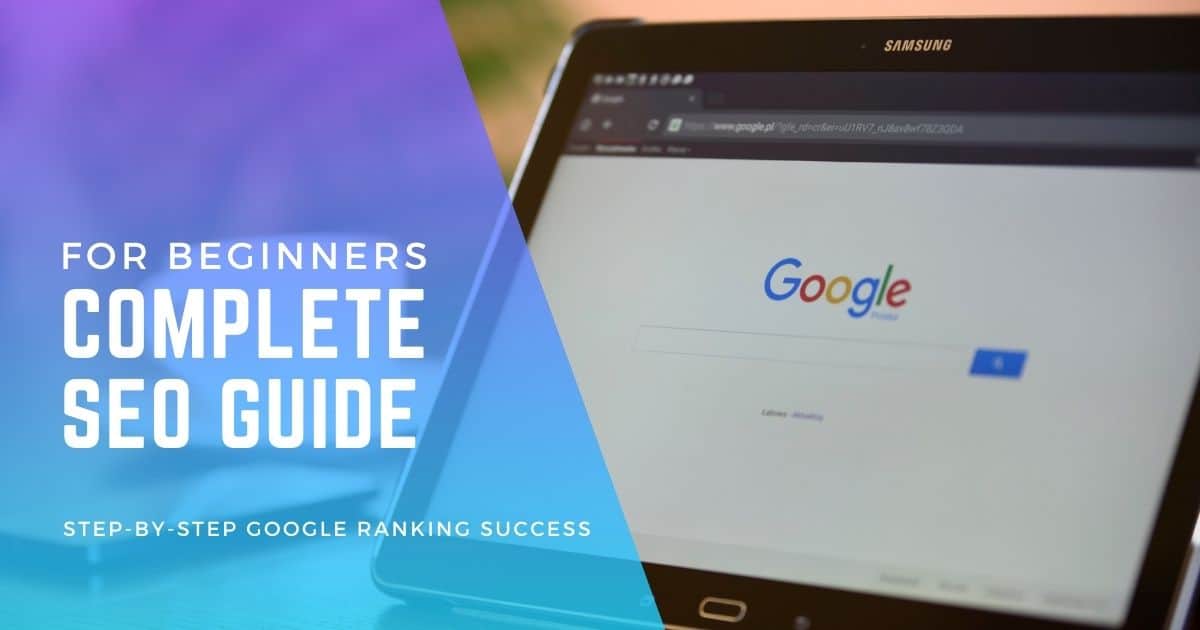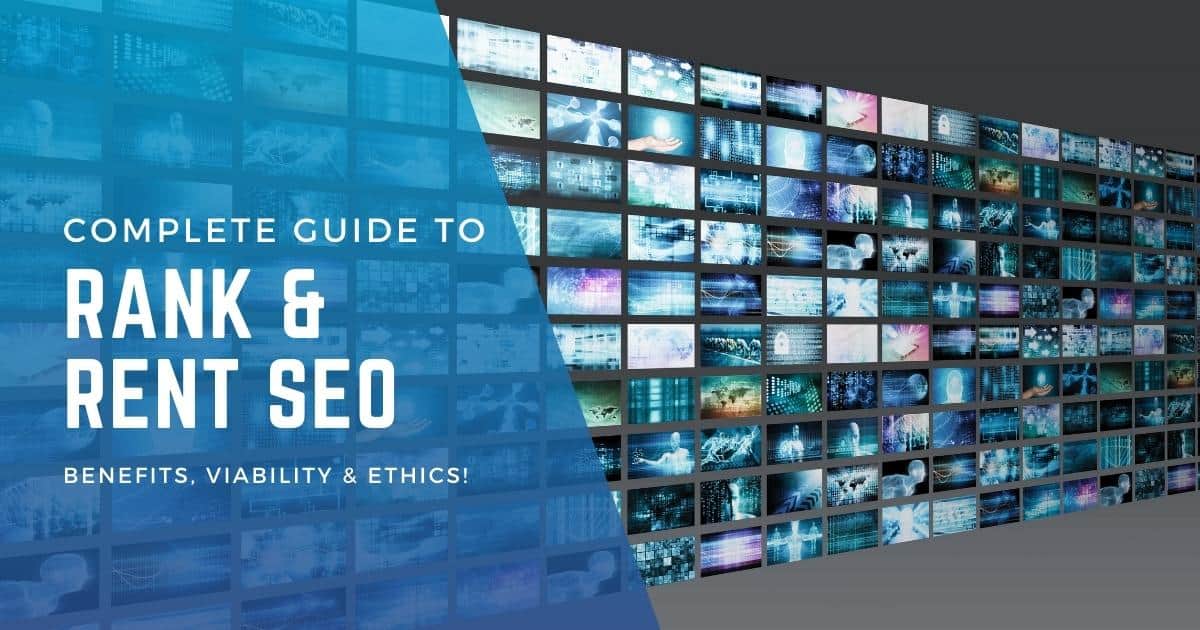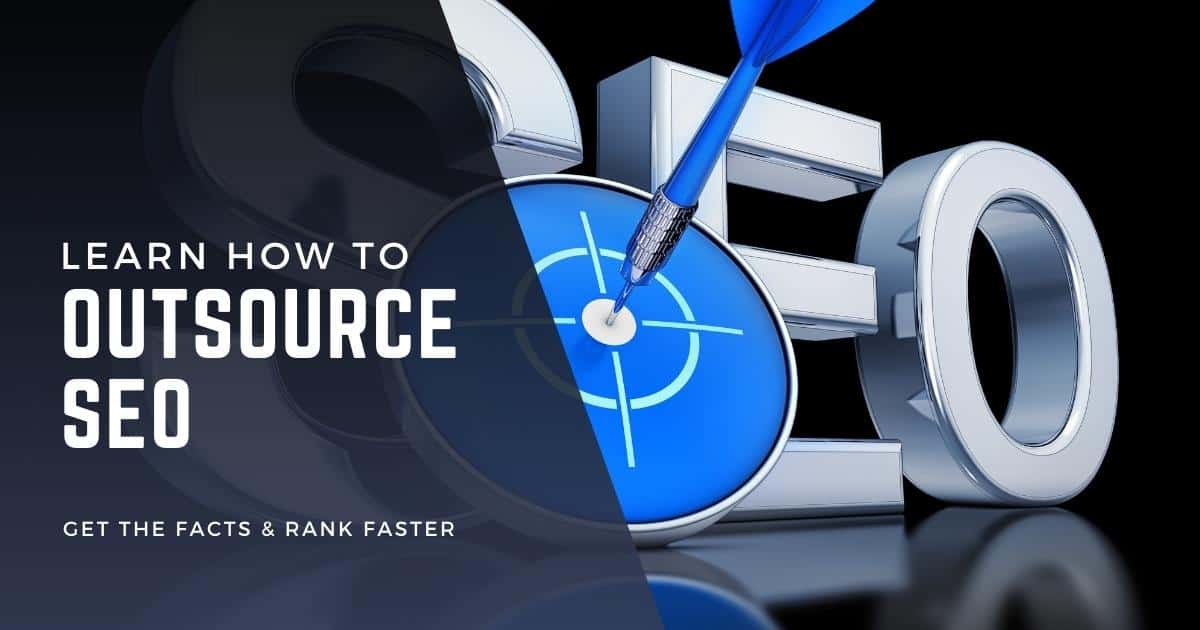Ever wondered why some websites always seem to show up on the first page of search engine results? That’s the magic of SEO, or Search Engine Optimization. It’s the art and science of making your website attractive to search engines, boosting its visibility.
I get it, SEO can feel like a maze. There’s keyword research, on-page optimization, and the ever-changing Google algorithms. But take it from me, a digital marketer who’s been through the ups and downs, you can absolutely get a grip on this. And the good news? We’re going to break it down into bite-sized, actionable steps.
So, why should you care about SEO? Understanding it can turn your website into an online magnet for traffic and potential customers. If you’re ready to boost your site’s search engine ranking and pull in more visitors, let’s roll up our sleeves and get to work.
What is Search Engine Optimization?
Search Engine Optimization (SEO) is the practice of optimizing websites to rank higher in search engine results pages (SERPs). It involves various techniques that aim to improve website visibility and attract targeted organic traffic. By implementing effective SEO strategies, businesses can increase their online presence, drive more website traffic, and ultimately achieve higher conversions and business growth.

Keyword Research: Unlocking the Power of Words
One crucial aspect of SEO is keyword research. This process involves identifying the most relevant keywords and phrases users type into search engines when looking for information about a particular industry or topic. By understanding these keywords, businesses can tailor their website content accordingly, ensuring that it aligns with what users are searching for.
Keyword research helps businesses uncover valuable insights about their target audience’s preferences and behaviors. It allows them to better understand the language and terminology their potential customers use. Armed with this knowledge, they can create content that resonates with their audience, answering their questions and solving their problems.
On-Page Optimization: Making Your Website Search Engine-Friendly
Another essential component of SEO is on-page optimization. This technique focuses on optimizing various elements within a website to make it more search engine-friendly. By doing so, businesses can enhance their chances of ranking higher in SERPs.
On-page optimization includes several factors, such as optimizing meta tags (title tags and meta descriptions), using appropriate header tags (H1, H2, etc.), incorporating relevant keywords throughout the content, improving page load speed, ensuring mobile responsiveness, and creating user-friendly URLs.
By paying attention to these on-page elements and making necessary optimizations, businesses can provide search engines with clear signals about the relevance and quality of their webpages. As a result, search engines are more likely to rank these pages higher in search results when they match users’ queries.
Link Building: Building Bridges for Better Rankings
Link building is another crucial aspect of SEO. It involves acquiring high-quality backlinks from other websites to improve a website’s authority and credibility in the eyes of search engines.
When reputable websites link back to your site, search engines signal that your content is valuable and trustworthy. This can positively impact your rankings in SERPs, as search engines strive to provide users with the most relevant and reliable information.
Building quality backlinks requires strategic outreach, relationship-building, and creating compelling content that others naturally want to link to. By earning these links organically, businesses can enhance their online reputation and increase their chances of ranking higher in search results.
Importance of SEO in Digital Marketing
SEO in digital marketing isn’t just a nice-to-have; it’s a must-have for any business looking to grow online. Why? Because it helps your website show up when people search for what you offer, making it easier for customers to find you. Let’s get into why this is so crucial.
Driving Organic Traffic to Websites
SEO is crucial in digital marketing by driving organic traffic to websites. Search engines are the go-to source for users seeking information, products, or services. By optimizing websites with relevant keywords and high-quality content, businesses can improve their rankings on search engine results pages (SERPs). This means that when potential customers search for related terms, they are more likely to find and visit websites that have implemented effective SEO strategies.
To illustrate the importance of driving organic traffic through SEO, consider the following scenario: Imagine you own an e-commerce store selling handmade jewelry. Without proper optimization, your website may struggle to compete against other similar businesses in the online marketplace.
However, you can increase your website’s visibility on search engines like Google by employing SEO techniques such as keyword research and on-page optimization. As a result, when potential customers search for terms like “handmade jewelry,” your website is more likely to appear among the top results. This increased exposure leads to higher click-through rates and ultimately drives more organic traffic to your site.
Reaching Target Audience Effectively and Generating Leads
One of the key benefits of implementing an SEO strategy is its ability to help businesses reach their target audience effectively and generate leads. By understanding what keywords and phrases potential customers are using when searching online, companies can tailor their content and optimize their website accordingly. This ensures that when users enter relevant search queries, they are presented with highly targeted results that match their intent.
For instance, let’s say you run a digital marketing agency specializing in social media management services for small businesses. Through thorough keyword research and competitor analysis, you discover that many small business owners are searching for terms like “social media management tips” or “how to grow my business on Instagram.”
By creating informative blog posts or guides optimized around these keywords, you provide valuable information to your target audience and position yourself as an expert in the field. This can increase credibility, trust, and, ultimately, more leads for your agency.
Enhancing Brand Visibility and Credibility
A well-executed SEO strategy can significantly enhance a brand’s visibility and credibility. When users search for specific products or services related to a particular industry, they tend to trust websites that appear higher in the search results.
Basics of SEO Strategy and Core Components
SEO isn’t just about keywords; it’s a mix of different parts that make your website easier to find. I’ll break down these core pieces so you can get more people to visit your site.

Thorough Keyword Research and Analysis
The foundation of any effective SEO strategy lies in thorough keyword research and analysis. Identifying the keywords your target audience uses to search for products, services, or information related to your business is crucial. By understanding their keywords, you can optimize your website’s content to align with their search intent.
Keyword research involves exploring tools such as Google Keyword Planner, SEMrush, or Moz Keyword Explorer to discover relevant keywords with high search volume and low competition. Look for long-tail keywords that are more specific and have a higher chance of driving targeted traffic to your website.
Once you have identified the keywords, analyze their performance metrics, such as search volume, competition level, and relevance. This analysis will help prioritize which keywords to target based on their potential impact on your website’s visibility in search engine results.
On-Page Optimization for Relevant Keywords

On-page optimization is vital in improving your website’s visibility in search engine rankings. It involves optimizing various elements on each webpage to make them more appealing to users and search engines.
Start by optimizing meta tags such as title tags and meta descriptions. These tags summarize your webpage’s content concisely and should include relevant keywords while enticing users to click through from the search results.
Next, focus on optimizing headings (H1-H6) throughout your content. Use descriptive headings that incorporate relevant keywords naturally while accurately representing the content beneath them. Well-structured headings enhance readability and help search engines understand the hierarchy and context of your content.
Content optimization is another critical aspect of on-page SEO. Create high-quality, informative content that incorporates targeted keywords strategically without overstuffing them unnaturally. Ensure that the content addresses user queries effectively while providing value-added information.
Optimize URLs by making them concise, descriptive, and keyword-rich whenever possible. A well-optimized URL provides both users and search engines with a clear understanding of what the page is about.
Building High-Quality Backlinks from Reputable Sources
Off-page optimization focuses on building high-quality backlinks from reputable sources to enhance your website’s authority and credibility in the eyes of search engines. Backlinks are external links pointing to your website, indicating that others find your content valuable and trustworthy.
To build backlinks, create exceptional content that naturally attracts attention and earns organic links. Engaging infographics, insightful blog posts, or comprehensive guides can all be linkable assets other websites would be willing to reference.
Guest posting on authoritative websites within your industry is another effective way to build backlinks. By contributing valuable content to these sites, you gain exposure and earn relevant backlinks that can significantly impact your SEO efforts.
Social media platforms can also play a role in off-page optimization.
Understanding Google’s Page Ranking Factors and Local Search Rankings

Knowing how Google ranks pages and local searches is like having a roadmap to online success. If you understand these rules, you can help your business show up when people are looking for what you offer. Let’s explore why this matters so much.
Google’s Page Ranking Factors
Google considers numerous factors when ranking webpages. These factors play a crucial role in determining the visibility and position of a website on search engine result pages (SERPs). Understanding these factors is essential for optimizing your website to improve its search engine optimization (SEO) performance.
- Relevance: One of the key considerations for Google is how relevant a webpage is to the user’s search query. Creating content that aligns with popular search terms related to your industry or niche is important to rank higher. Conduct thorough keyword research to identify relevant keywords and incorporate them strategically into your content.
- Authority: Google assesses the authority of a webpage by analyzing the quality and quantity of backlinks it receives from other reputable websites. Backlinks serve as votes of confidence, indicating that your content is valuable and trustworthy. Focus on building high-quality backlinks from authoritative sources within your industry through guest posting, influencer outreach, or creating exceptional content that naturally attracts links.
- User Experience: User experience plays a vital role in page rankings. Websites with excellent user experience are more likely to rank higher in search results. Factors like page load speed, mobile-friendliness, intuitive navigation, and engaging design contribute to positive user experiences. Optimize your website by minimizing loading times, ensuring responsive design across devices, and enhancing overall usability.
- Loading Speed: Slow-loading websites frustrate users and negatively impact SEO performance. Google prioritizes fast-loading sites because they provide better user experiences. Optimize your website’s loading speed by compressing images, minifying code, leveraging browser caching, and utilizing Content Delivery Networks (CDNs).
Local Search Rankings
In addition to general page ranking factors, local search rankings have their own set of considerations that businesses should pay attention to if they want to attract customers within their geographical area.
- Proximity to the Searcher’s Location: When users search for local businesses or services, Google considers their location and displays geographically relevant results. Optimizing your website for local search involves including location-specific keywords in your content, meta tags, and URLs. Register your business on Google My Business to improve visibility in local searches.
- Online Reviews: Online reviews contribute significantly to a business’s reputation and influence local search rankings. Positive reviews indicate trustworthiness and customer satisfaction. Encourage customers to leave reviews on platforms like Google Maps, Yelp, or industry-specific review sites. Responding promptly and professionally to positive and negative reviews demonstrates excellent customer service.
- Citations:
Understanding How Search Engines Use URLs and Work in SEO
How search engines look at URLs can make or break your website’s visibility. Understanding this can give your site a big advantage. Let’s discuss why this is a game-changer for your online presence.
URLs: Conveying Information and Improving Visibility
URLs, or Uniform Resource Locators, are not just a string of characters that direct us to a webpage. They play a crucial role in conveying information about the content of a webpage to search engines. When search engine bots crawl websites, they analyze the URL structure to understand what the page is about.
Creating descriptive URLs that include relevant keywords is important to improve search engine visibility. Incorporating keywords into your URLs provides search engines with valuable information about your page’s topic. For example, if you have a blog post about “best SEO practices,” a URL like www.example.com/best-seo-practices would be more informative than www.example.com/post123.
Search engines are more likely to display those pages in search results when they encounter descriptive URLs that align with user queries. This can increase organic traffic as users find your website through relevant searches.
Website Structure and Hierarchy: Decoding through URLs
Search engines use URLs not only to understand individual webpages but also to decipher the structure and hierarchy of a website. How you organize your URLs can impact how search engines perceive the relationships between different pages on your site.
For instance, if you have an e-commerce website selling shoes, organizing your product categories as subdirectories within the main domain can help establish a clear hierarchy. A URL such as www.example.com/shoes/womens/boots indicates that “boots” belong under the “womens” category which falls under the broader “shoes” category.
Structuring your website’s URLs logically and hierarchically makes it easier for users and search engines to navigate your site. This improves user experience by providing intuitive paths for visitors to explore related content.
Enhancing User Experience and SEO Performance
A well-organized URL structure benefits search engines and enhances user experience. When users can easily understand and interpret the URLs of your webpages, they gain a sense of trust and confidence in your website.
Imagine you are searching for information on how to grow tomatoes at home. Which URL would you find more trustworthy and appealing: www.example.com/article123 or www.example.com/gardening/tips/how-to-grow-tomatoes? The latter is descriptive and gives users a clear idea of what to expect from the page.
Proper URL organization can positively impact SEO performance. When search engines see that your URLs follow a logical structure, they are more likely to perceive your website as authoritative and relevant to users’ queries.
Beginner’s Guide to Keyword Research

Keyword research is like a treasure map for your website. Get it right, and you’ll guide more people to your site when they search online. Let’s explore how to start this important task.
What is Keyword Research?
Keyword research is an essential aspect of search engine optimization (SEO) that involves identifying relevant keywords and phrases that users search for. By understanding what keywords people use to find information, products, or services related to your website, you can optimize your content to rank higher in search engine results pages (SERPs). This, in turn, increases the visibility of your website and drives organic traffic.
Tools for Keyword Research
To conduct effective keyword research, utilizing reliable tools that provide valuable insights is crucial. Here are some popular options:
- Google Keyword Planner: This free tool from Google allows you to discover new keywords and assess their search volume. You can also analyze keyword trends and competition levels.
- SEMrush: SEMrush offers a comprehensive suite of SEO tools, including a powerful keyword research feature. It provides detailed data on keyword difficulty, search volume, and related keywords.
- Moz Keyword Explorer: Moz’s tool helps you find relevant keywords by providing accurate monthly search volume data and additional metrics like organic click-through rate (CTR) potential.
By leveraging these tools’ capabilities, you can uncover valuable keywords that align with your website’s content and goals.
The Power of Long-Tail Keywords
While popular short-tail keywords may generate high search volumes, they often come with intense competition. As a beginner in SEO, targeting long-tail keywords can be advantageous due to their lower competition levels and higher conversion potential.
Long-tail keywords consist of three or more words that are more specific and focused on a particular niche or topic. For example, instead of targeting “shoes,” you could target “comfortable running shoes for women.” By incorporating long-tail keywords into your content strategy, you increase the likelihood of attracting qualified visitors who are actively seeking what you offer.
Understanding User Intent
User intent is the underlying motivation or purpose behind a user’s search query. To effectively optimize your website for SEO, it is crucial to understand and align with user intent.
When conducting keyword research, consider the different types of user intent:
- Informational Intent: Users seek information or answers to their questions. Example: “how to lose weight.”
- Navigational Intent: Users are looking for a specific website or brand. Example: “Facebook login.”
- Transactional Intent: Users intend to make a purchase or engage in a specific action. Example: “buy iPhone online.”
By understanding user intent, you can tailor your content and keywords accordingly, ensuring that you provide valuable information or fulfill users’ needs.
On-Page and Off-Page Optimization Techniques
On-page and off-page techniques are the building blocks for a website that people can easily find. Mastering these methods can make your site more attractive to search engines and users alike. Let’s dig into why this is key to your online success.
On-Page Optimization: Enhancing Your Website’s Visibility
On-page optimization is crucial in improving your website’s visibility and search engine rankings. By strategically optimizing various elements within your web pages, you can make it easier for search engines to understand the content and purpose of your site. Here are some key aspects of on-page optimization:
- Meta Tags: Meta tags provide concise descriptions of your web page content, helping search engines understand what your page is about. Optimizing meta tags, including the title tag and meta description, involves incorporating relevant keywords that accurately represent the content.
- Headings: Proper usage of headings (H1-H6) helps structure your content and highlights important sections for both users and search engines. Including relevant keywords in headings can further optimize your on-page SEO efforts.
- Content: The quality, relevance, and uniqueness of your website’s content significantly impact its ranking potential. Creating well-written, informative, and engaging content that incorporates targeted keywords naturally is essential for on-page optimization.
- Images: Optimizing images involves reducing file sizes to improve page load speed while maintaining image quality. Using descriptive alt text that includes relevant keywords helps search engines understand the context of the images.
- Internal Linking: Internal links connect different pages within your website, enhancing navigation and helping search engines discover new content more easily. Strategic internal linking also distributes link authority throughout your site, improving overall SEO performance.
By focusing on these on-page optimization techniques, you can ensure that each webpage is optimized to its fullest potential for better visibility in search results.
Off-Page Optimization: Building Authority through Backlinks

While on-page optimization deals with elements within your website itself, off-page optimization primarily revolves around building high-quality backlinks from authoritative websites pointing toward yours. This technique aims to establish credibility and authority for your website in the eyes of search engines. Here’s what you need to know about off-page optimization:
- High-Quality Backlinks: Backlinks’ quality, relevance, and authority are crucial factors in off-page optimization. Acquiring backlinks from reputable websites within your industry or niche demonstrates to search engines that your content is valuable and trustworthy.
- Guest Blogging: Writing guest posts for authoritative blogs or websites lets you showcase your expertise while gaining valuable backlinks.
Including and Optimizing Images
Images play a crucial role in enhancing user engagement on webpages. Visitors who come across visually appealing and relevant images capture their attention and encourage them to stay longer on the page. This increased dwell time signals search engines that your content is valuable, ultimately boosting your SEO performance.
Several factors must be considered to optimize your images for better SEO results. First, pay attention to the file names of your images. Instead of using generic names like “image123.jpg,” use descriptive file names that include relevant keywords related to the image content. This helps search engines understand what the image is about and improves its discoverability.
In addition to file names, alt tags are another essential aspect of optimizing images for SEO. Alt tags provide alternative text descriptions for users with difficulty viewing or loading images on their devices. Including relevant keywords in alt tags not only helps with accessibility but also provides additional context for search engines when indexing your webpage.
Captions are often overlooked but can significantly impact SEO performance when used effectively. Adding captions that accurately describe the image content and include relevant keywords will provide search engines with more information about your webpage’s relevance and improve its chances of ranking higher in search results.
Another crucial consideration is the size of your images. Large image files can slow page load times, negatively affecting user experience and SEO rankings. Compressing images without compromising their quality is recommended to address this issue. Several online tools are available that allow you to reduce file sizes while maintaining visual clarity.
Creating an image sitemap can help search engines discover and index all the images on your website more efficiently. An image sitemap is a roadmap for search engine crawlers by providing specific information about each image’s location and associated metadata. This ensures that all your valuable visual content gets properly indexed by search engines, increasing its visibility in organic searches.
Mobile-Friendly Design and SEO
A mobile-friendly design is essential for SEO as search engines prioritize sites optimized for mobile users. Google’s mobile-first indexing evaluates the mobile version of a website for ranking and indexing. Poor mobile design can lead to lower rankings, reduced traffic, and diminished user experience.
Why Mobile-Friendly Design Matters
Mobile devices have become integral to our lives in today’s digital age. From smartphones to tablets, people rely on these gadgets for various purposes, including browsing the internet. As a result, websites must prioritize mobile-friendly design to provide a seamless user experience across devices.
One of the key aspects of mobile-friendly design is responsive web design. This approach ensures that websites adapt effectively to different screen sizes, whether a small smartphone or a larger tablet. By employing responsive design techniques, businesses can ensure that their website looks and functions well regardless of their visitors’ devices.
The Impact on Search Engine Optimization (SEO)
Mobile-friendliness goes beyond just improving user experience; it also significantly impacts search engine optimization (SEO). Search engines like Google prioritize mobile-first indexing, which means they prefer websites optimized for mobile devices. Therefore, having a mobile-friendly website can greatly enhance your chances of ranking higher in search engine results pages (SERPs).
When your website is optimized for mobile devices, search engines can easily crawl and index its content. This allows them to understand your site’s structure and relevance better, improving the visibility of search results. Since more and more people are using their smartphones to perform online searches, having a mobile-friendly website increases your chances of attracting organic traffic.
Optimizing Page Speed for Mobile SEO Success
Page speed is crucial in user experience and SEO performance on mobile devices. Slow-loading websites frustrate users and lead to high bounce rates. Moreover, search engines take into account page speed when determining rankings.
To optimize page speed for mobile SEO success, there are several steps you can take:
- Compress images: Large image files can significantly slow your website’s loading time. Compressing images without compromising quality can help improve page speed.
- Minify code: Removing unnecessary characters, whitespace, and comments from your website’s code can reduce file size and enhance loading speed.
- Enable browser caching: By enabling browser caching, visitors can store certain elements of your website on their devices, reducing the need for repeated downloads and speeding up subsequent visits.
- Use a content delivery network (CDN): A CDN stores copies of your website on servers located in different geographic locations. This helps deliver content more quickly to users by minimizing latency.
Implementing these strategies can significantly improve your website’s page speed on mobile devices, ensuring a better user experience and higher search engine rankings.
To summarize, mobile-friendly design is crucial for providing a seamless user experience across devices. Responsive web design ensures that websites adapt effectively to different screen sizes, while mobile-first indexing prioritizes mobile-friendly sites in search engine rankings. Optimizing page speed is vital for mobile SEO success as it improves user experience and boosts search engine visibility.
Optimizing Your Titles for Better SEO Performance
Optimizing your titles is like putting a bright sign on your website that says, “Click me!” Done right, it can make your site more visible in search results and attract more clicks. Let’s discuss how to make this happen for you.
Concise and Descriptive Title Tags
Optimizing your title tags is crucial to enhance your website’s SEO performance. These tags serve as a concise summary of the content on each webpage and play a significant role in attracting organic traffic. When crafting your title tags, aim for conciseness and descriptiveness. Keep them short yet informative, providing users with a clear understanding of what they can expect from your page.
Including targeted keywords in your title tags is essential. Ideally, place these keywords at the beginning of the tag to maximize their impact. Doing so increases the chances of search engines recognizing the relevance between your content and users’ search queries. This optimization technique helps improve your website’s visibility in search results pages (SERPs), making it more likely for users to click on your link.
Unique Titles Enhance Click-Through Rates
Creating unique titles for each webpage on your site is another vital aspect of optimizing for better SEO performance. When search engine users browse through SERPs, they are likelier to click on attractive links. By crafting distinct titles that accurately represent the content of each page, you greatly enhance the click-through rate (CTR) from search results.
Imagine searching for information online and coming across multiple pages with identical or generic titles. Chances are you would be less inclined to click on those links as they do not indicate what sets them apart or whether they contain precisely what you’re looking for. To avoid this scenario and boost CTRs, create unique and compelling titles that differentiate your webpages from competitors’.
Relevant Title Tags Aid Search Engine Understanding
Search engines strive to deliver accurate results that align with user intent when displaying SERPs. Consequently, using relevant title tags helps these algorithms understand the content of webpages more effectively. By providing clear indications about what your page offers, you increase the likelihood of search engines correctly indexing and ranking your content.
Consider title tags as a summary or snapshot of your webpage. When search engine crawlers analyze these tags, they gain valuable insights into your content’s topic, relevance, and context. Consequently, utilizing relevant title tags significantly improves the chances of your website appearing in SERPs when users search for related topics.
Compelling Title Tags Drive User Engagement
While optimizing title tags is primarily focused on improving SEO performance, it also impacts user engagement. A compelling and well-crafted title tag can entice users to click on your link rather than others in the search results.
Optimizing Meta Descriptions for Click-Through Rates
Meta descriptions are crucial in providing users with a brief summary of webpage content in search results. When crafted effectively, they can greatly impact your website’s click-through rates (CTR).
Including relevant keywords and a compelling call to action
One key aspect of optimizing meta descriptions is incorporating relevant keywords that accurately represent the content on your webpage. Including these keywords increases the chances of your website appearing in search results when users enter related queries. This helps attract the right audience to your site.
However, it’s important to strike a balance and avoid keyword stuffing, which can negatively impact user experience and search engine rankings. Instead, focus on using keywords naturally within the meta description while ensuring it remains coherent and engaging.
In addition to keywords, an effective meta description should also include a compelling call-to-action (CTA). A well-crafted CTA encourages users to click through to your website by creating a sense of urgency or offering value. For example, phrases like “Discover now,” “Limited time offer,” or “Learn more” can entice users to take action and visit your page.
Helping users understand what to expect from the webpage
Meta descriptions serve as a preview for users, giving them an idea of what they can expect when they click on your website. To optimize them for better CTRs, it’s essential to provide accurate and concise information about the content on your page.
Consider describing the main topic or purpose of the webpage within the meta description. This lets users quickly determine if your page aligns with their needs or interests. Providing clear expectations helps reduce bounce rates as visitors are more likely to stay on your site when they find exactly what they were looking for.
To make your meta description even more compelling, consider highlighting any unique selling points or benefits users can gain from your webpage. Whether it’s valuable information, a solution to a problem, or an exclusive offer, emphasizing these aspects can entice users to click through and explore further.
Keeping meta descriptions within recommended character limits
While providing enough information in your meta description is important, keeping it within the recommended character limits is equally crucial. Search engine result pages (SERPs) have limited space for displaying meta descriptions, and exceeding the limit may result in truncated text.
To ensure that your meta description appears fully in SERPs, aim to keep it between 150-160 characters. Doing so guarantees that users understand what your webpage offers without missing out on any important details.
Understanding URL Structure and Navigation for SEO
A well-organized URL structure is like a well-laid-out store: easy for search engines and people to navigate. Getting this right can make your website more user-friendly and improve its ranking. Let’s get into why this matters for your site.
Clear and Logical URL Structure: Enhancing User Experience and Search Engine Navigation
A website’s URL structure facilitates smooth navigation for users and search engines. When URLs are clear and logical, visitors can easily understand the content they find on a particular page just by looking at the URL. This helps users quickly locate relevant information and provides search engines with valuable context about the page.
When optimizing URLs for SEO, it is essential to include relevant keywords that accurately describe the page’s content. Incorporating these keywords into your URLs improves your chances of ranking higher in search engine results pages (SERPs). For instance, if you have a blog post about “10 Tips for Effective SEO,” a well-structured URL like example.com/seo-tips would be more effective than a generic one like example.com/article123.
Using hyphens to separate words in URLs is recommended to enhance readability for users and search engines. Avoiding underscores or special characters ensures that there are no ambiguities when interpreting the URL.
To illustrate further, consider an example where you run an online shoe store specializing in athletic footwear. Instead of having a convoluted URL such as example.com/product?id=987654, it would be far more user-friendly to have structured URLs like example.com/men/running-shoes/nike-air-zoom. Such descriptive URLs enhance user experience by clearly indicating what can be found on each page.
Organized Navigation Menus: Improving User Experience and Website Crawlability
The organization of navigation menus on your website significantly impacts user experience and website crawlability. A well-designed navigation menu allows visitors to effortlessly explore your site’s various sections, finding the information they seek without frustration.
From an SEO standpoint, having organized navigation menus ensures that search engine bots can effectively crawl and index your website. Search engines can easily understand the hierarchy and relationships between different pages when they encounter a logical navigation structure.
Consider implementing drop-down menus that categorize content into relevant sections. This approach allows users to navigate through your site’s various topics seamlessly. For example, if you have an e-commerce website selling clothing, you could create separate sections for men’s, women’s, and children’s clothing in your navigation menu.
Furthermore, it is crucial to maintain consistency in your navigation menus across all website pages. By doing so, users will develop familiarity with the layout and easily locate desired information regardless of which page they are on.
Tips for Improving Link Profile, Social Sharing, and Site Architecture
Good links, easy sharing, and a well-planned website layout are like the three legs of a stool that hold up your online success. Let’s explore how to strengthen each leg so your website can reach the top.
Building a diverse and high-quality link profile improves website authority and rankings.
Having a strong link profile is crucial for improving your website’s authority and rankings in search engine results. A diverse link profile means having links from various reputable sources across the web. This shows search engines that your website is trustworthy and relevant to users’ queries.
To build a diverse link profile, consider the following strategies:
- Guest Blogging: Reach out to authoritative websites in your niche and offer to write guest posts that include backlinks to your site. This helps you gain exposure to new audiences and builds valuable links.
- Social Bookmarking: Submitting your content to social bookmarking sites like Reddit or StumbleUpon can help attract attention from users who may share it further, leading to more backlinks.
- Directory Submissions: Submitting your website to relevant directories can increase visibility and generate backlinks from trusted sources.
- Content Creation: Creating high-quality content that others find useful or informative increases the chances of people linking to it naturally.
- Collaborate with Influencers: Partnering with influencers in your industry can result in them mentioning or linking to your website, boosting its credibility.
Remember, quality matters more than quantity. Focus on acquiring links from authoritative websites rather than pursuing spammy tactics that could harm your SEO efforts.
Encouraging social sharing of content can increase visibility and attract more traffic.
In today’s digital landscape, social media significantly drives traffic and increases brand awareness. By encouraging social sharing of your content, you can tap into the power of word-of-mouth marketing and reach wider audiences.
Here are some effective ways to encourage social sharing:
- Add Social Sharing Buttons: Make it easy for visitors to share your content by including social sharing buttons on your website. These buttons allow users to quickly share your articles, blog posts, or product pages with their followers on platforms like Facebook, Twitter, LinkedIn, and Pinterest.
- Create Share-Worthy Content: Craft compelling and valuable content that resonates with your target audience. People who find your content helpful or entertaining are likelier to share it with their network.
- Engage with Your Audience: Actively engage with your audience on social media by responding to comments, messages, and mentions. Building relationships with your followers encourages them to share your content and spread the word about your brand.
- Run Contests or Giveaways: Organize contests or giveaways that require participants to share your content for a chance to win. This incentivizes social sharing and can lead to increased visibility and engagement.
- Collaborate with Influencers
Establishing Expertise and Authoritativeness in SEO
Being an expert and trusted source in SEO isn’t just for show; it helps you win the top spots in search results. Let’s see how you can show search engines and people that you’re the go-to source for quality information.
Demonstrating expertise through high-quality content
Creating high-quality content is a crucial aspect of establishing expertise in the field of SEO. Users and search engines value informative, well-researched, and relevant content. By consistently producing such content, you provide valuable information to your audience and showcase your expertise.
To demonstrate your expertise effectively, focus on creating comprehensive articles covering various SEO aspects. Dive deep into topics, providing detailed explanations and actionable tips. Use examples and case studies to illustrate your points and make them more relatable for readers.
Ensure your content is up-to-date with industry trends and best practices. Search engines favor websites that regularly update their content with accurate information. This demonstrates ongoing expertise and keeps users coming back for more.
Earning backlinks from authoritative websites
Backlinks are essential in determining a website’s authority in specific niches or industries. When authoritative websites link back to your site, search engines signal that your content is trustworthy and valuable.
To earn backlinks from authoritative websites, you need to create exceptional content that others will want to reference. This can include original research findings, insightful analysis, or unique perspectives on industry-related topics.
Another effective strategy is reaching out to influencers or experts in the SEO field for collaboration opportunities. Engaging with these individuals through guest posting or interviews can build relationships that may increase your website’s exposure.
Remember that building backlinks takes time and effort. Focus on creating valuable connections within your niche by networking with other professionals or participating in relevant online communities.
Engaging with industry influencers
Engaging with industry influencers can be highly beneficial when establishing expertise in SEO. Influencers have already built a strong reputation within the field, making their endorsement or collaboration valuable for increasing exposure and credibility.
To engage with industry influencers, start by following their work and interacting with their content. Leave thoughtful comments on their blog posts or social media updates to initiate conversations. You can showcase your knowledge and expertise by actively participating in discussions while building rapport.
Consider reaching out to influencers directly through email or social media. Introduce yourself and express your admiration for their work. Propose collaboration opportunities such as guest blogging or joint webinars that can benefit both parties involved.
Remember that building relationships with influencers takes time and persistence. Be genuine in your interactions and focus on providing value rather than solely seeking personal gain.
Regularly updating content with accurate information
Regularly updating your content is essential not only for search engine optimization but also for showcasing ongoing expertise.
Black Hat vs White Hat SEO Strategies
Choosing the right SEO strategy can make or break your website’s success. Let’s explore the big differences between Black Hat and White Hat SEO so you can make smart choices that lead to long-lasting results.
Overview
Black hat SEO tactics involve unethical practices like keyword stuffing, hidden text, or buying links to manipulate rankings. On the other hand, white hat SEO strategies focus on ethical techniques that comply with search engine guidelines. While black hat techniques may offer short-term gains, they can lead to penalties and long-term damage to website visibility.
Black Hat SEO Tactics
Black hat SEO tactics employ deceptive techniques to artificially boost a website’s ranking in search engine results pages (SERPs). These methods violate search engine guidelines and compromise the integrity of the online ecosystem. Here are some examples of black hat strategies:
- Keyword Stuffing: This involves excessively using keywords unnaturally within web page content or meta tags. While keywords are essential for optimization, overusing them makes the content unreadable and offers a poor user experience.
- Hidden Text: Concealing text by matching its color with the background or positioning it off-screen is another black hat technique. The purpose is to deceive search engines by including additional keywords without making them visible to users.
- Link Schemes: Buying or exchanging links solely for manipulating rankings is considered a black hat practice. Search engines value organic link building as it signifies genuine credibility and authority.
- Cloaking: This technique presents different content to search engines than what users see when visiting a webpage. Cloaking aims to deceive search engines into ranking a page higher based on misleading information.
While these tactics may seem tempting due to their potential for quick results, they have severe consequences if search engines detect them.
White Hat SEO Strategies
White hat SEO strategies prioritize ethical techniques that align with search engine guidelines while focusing on delivering value to users. By adopting white hat practices, websites can build a solid foundation for long-term success. Let’s explore some effective white hat strategies:
- Creating Valuable Content: Producing high-quality, informative, and engaging content is at the core of white hat SEO. By addressing users’ needs and providing valuable insights, websites can attract organic traffic and encourage repeat visits.
- Optimizing Meta Tags: White hat SEO involves optimizing meta tags such as title tags and meta descriptions with relevant keywords to improve visibility in search results. These tags should accurately reflect the page content while enticing users to click through.
- Building Quality Backlinks Naturally: White hat SEO focuses on acquiring backlinks naturally instead of resorting to link schemes.
Getting Your Site Indexed on Google
Getting your website noticed by Google is the first step to online success. I’ll show you how to ensure Google sees your site, which is key to attracting more people.
Submitting a Sitemap: Let the Search Engines Discover and Index Your Webpages
Submitting a sitemap through Google Search Console is essential to ensure that search engines can easily discover and index your webpages. A sitemap is like a roadmap for search engine bots, guiding them through the structure of your website and helping them understand its content. By submitting a sitemap, you essentially say to Google, “Hey, here’s my website, please take a look!”
A sitemap provides valuable information about the pages on your site, such as their URL, when they were last updated, and how important they are to other pages. This information helps search engines prioritize crawling and indexing your webpages efficiently. Without a sitemap, search engine bots may have difficulty finding all of your webpages or understanding their importance.
To create a sitemap for your website, you can use various tools available online or even generate one manually. Once you have your sitemap ready, you can submit it through Google Search Console. This action notifies Google that there is new content on your site that needs to be crawled and indexed.
Internal Links: Aid in Indexing New or Updated Content
Internal links play a crucial role in helping search engines index new or updated content on your website. When you create internal links from existing indexed pages to new or updated pages, you provide clear paths for search engine bots to follow. These internal links act as bridges between different parts of your website and help establish relationships between related content.
When search engine bots encounter an internal link while crawling one page of your site, they will follow that link to explore other linked pages. By doing so, these bots can discover new content faster and ensure it gets indexed promptly. Internal linking helps distribute authority across various pages of your site since each link passes some authority from the linking page to the linked page.
To optimize your internal linking strategy for better indexing, consider the following tips:
- Identify key pages on your website that you want to rank higher and strategically link to them from other relevant pages.
- Use descriptive anchor text that accurately reflects the content of the linked page.
- Avoid excessive linking or overstuffing keywords in the anchor text, as search engines may see it as spammy.
- Regularly review and update your internal links as you create new content or modify existing pages.
Do I Need an SEO Tool or Expert?
Choosing between an SEO tool and hiring an expert can make or break your website’s success. I’ll help you weigh the pros and cons so you can make the best choice for your needs.
SEO Tools: Insights and Analysis Made Easy
SEO tools like SEMrush, Moz, or Ahrefs have revolutionized how businesses optimize their websites for search engines. These powerful tools provide valuable insights into website performance, keyword research, and competitor analysis. You can uncover hidden opportunities to boost your online visibility with just a few clicks.
Imagine accessing a treasure trove of data that tells you how your website performs in search engine rankings. SEO tools allow you to track your keyword rankings over time, identify areas where your website is underperforming, and discover new keywords with high potential. This information empowers you to make informed decisions about your SEO strategy.
But it doesn’t stop there. These tools go beyond keyword research by providing comprehensive competitor analysis. You can spy on your competitors’ backlinks, uncover their top-performing content, and even peek into their advertising strategies. With this knowledge, you can stay one step ahead of the competition and fine-tune your digital marketing efforts.
The Role of an SEO Expert: Tailored Strategies for Success
While SEO tools are undoubtedly powerful allies in the quest for online supremacy, they have limitations. That’s where an SEO expert comes in. An expert brings a wealth of knowledge and experience, offering personalized guidance tailored to your business needs.
Think of an SEO expert as a seasoned captain navigating through the vast ocean of search engine algorithms. They understand the intricacies of ranking factors and know how to optimize your website accordingly. From technical optimizations like site speed improvements to crafting compelling meta tags that entice users to click through from search results pages – an expert knows what it takes to drive organic traffic.
Moreover, an experienced SEO professional keeps up with the ever-evolving landscape of search engine optimization techniques. They are well-versed in the latest algorithm updates from Google and can adapt your strategy accordingly. This agility is crucial in an industry where what worked yesterday may not work today.
Tools vs. Expertise: Finding the Right Balance
Now, you might wonder whether you should invest in an SEO tool, hire an expert, or perhaps both. The answer lies in understanding the complexity of your website and your goals.
If you have a small website with straightforward objectives, investing in an SEO tool might be sufficient to meet your needs. These tools provide a cost-effective way to access valuable data and perform essential optimizations without breaking the bank.
Google’s SEO Resources and Training
Google offers free tools and lessons to help you get better at SEO. I’ll show you which ones are worth your time and how they can give you an edge.
Learning from the Search Console Help Center, Webmaster Guidelines, and the Google Webmasters YouTube channel
Google offers many resources to help website owners learn about SEO best practices. The Search Console Help Center is an invaluable information hub covering everything from setting up your website on the search console to troubleshooting issues and improving your site’s performance. It provides step-by-step guides, detailed explanations, and practical tips to help you navigate the intricacies of SEO.
The Webmaster Guidelines are another essential resource provided by Google. These guidelines outline the best practices that webmasters should follow to ensure their websites are optimized for search engines. They cover various aspects like creating unique and relevant content, optimizing page titles and meta descriptions, using descriptive URLs, and much more. Following these guidelines can significantly improve your website’s visibility in search results.
For those who prefer video tutorials, Google has created the Google Webmasters YouTube channel. This channel features a wide range of videos covering different SEO-related topics. From beginner-level introductions to advanced techniques, these videos offer valuable insights from Google experts. Whether you want to understand how search algorithms work or want tips on improving your site’s mobile-friendliness, this channel has covered you.
Staying Updated with the Google Search Central Blog
To keep up with the ever-evolving world of SEO, it’s crucial to stay informed about algorithm changes and industry trends. That’s where the Google Search Central blog comes in handy. This official blog provides regular updates directly from Google regarding changes in search algorithms, new features in Search Console, and other important announcements.
By regularly reading this blog, you can stay ahead of the curve. The blog also covers topics like mobile-first indexing, structured data implementation, site speed optimization, and much more. Awareness of these updates can help you adapt your SEO strategies accordingly and ensure that your website remains competitive in the search results.
Enhancing SEO Skills with Online Courses
If you’re looking for more structured learning opportunities, Google offers online courses that can help you improve your SEO skills. One such course is the “Google Analytics Academy,” which uses analytics data to enhance SEO performance. Understanding how to interpret and analyze website data can provide valuable insights into user behavior, keyword performance, and overall site optimization.
The Google Analytics Academy course covers topics like setting up Google Analytics, tracking website traffic, analyzing audience demographics, and measuring conversion rates. By completing this course, you’ll gain a deeper understanding of leveraging analytics data to make informed decisions about your SEO strategy.
Optimizing Websites for Better Visibility on Google
By taking advantage of these resources provided by Google, you can enhance your understanding of SEO best practices and optimize your website for better visibility on the search engine.
Learning SEO Summary
Keep learning and getting better. The online world changes fast, so you need to stay current to be seen online.
This guide discusses SEO, which helps your website appear in search results. It covers everything from basic tips to advanced methods. By using these tips and keeping them up-to-date, more people will find your website when they search online.
To summarize the key points covered:
- Search Engine Optimization (SEO) is the practice of optimizing websites to improve their visibility on search engine result pages (SERPs).
- SEO is vital in digital marketing as it helps businesses reach their target audience organically.
- Developing a comprehensive SEO strategy involves understanding core components such as keyword research, on-page optimization techniques, off-page optimization techniques, mobile-friendly design considerations, and optimizing titles and meta descriptions.
- Google’s page ranking factors influence how websites are ranked in search results. Local search rankings also depend on factors like location relevance and user reviews.
- URLs play a significant role in SEO by providing information about webpage content to search engines.
- Keyword research is essential for identifying relevant terms users search for and strategically incorporating them into website content.
- On-page optimization involves optimizing webpage elements like headings, content structure, internal linking, etc., while off-page optimization focuses on building quality backlinks from reputable sources.
- Including optimized images with descriptive filenames and alt tags can improve your website’s visibility in image searches.
- Mobile-friendly design is crucial for delivering an optimal user experience and meeting Google’s mobile-first indexing requirements.
- Optimizing titles attracts user attention on SERPs, while optimizing meta descriptions improves click-through rates by providing concise summaries of webpage content.
- URL structure and navigation should be intuitive for users and search engines to enhance crawlability and user experience.
- Building a strong link profile, encouraging social sharing, and designing a user-friendly site architecture contribute to improved SEO performance.
- Establishing expertise and authoritativeness in your niche helps build trust with users and search engines.
- It is essential to follow ethical “White Hat” SEO strategies rather than resorting to manipulative “Black Hat” techniques that can lead to penalties from search engines.
- Getting your site indexed on Google ensures its inclusion in search results. Submitting an XML sitemap and using Google Search Console can facilitate this process.
- Depending on your knowledge and resources, you may consider utilizing SEO tools or seeking assistance from an expert to optimize your website effectively.
- Google provides valuable SEO resources and training materials to help you stay updated with the latest best practices.
Over to You
So there you have it, SEO isn’t just a one-time thing. It’s about keeping up with changes and trying new ways to improve your website. If you put in the work, you’ll see more people visiting your site. Why not start tweaking your website today?
With SEO, you’re never really done learning. But hey, that’s the fun part. It keeps things interesting and helps you stay ahead. So put what you’ve learned into action, and see your website climb those search ranks.
FAQs
How long does it take for SEO efforts to show results?
The time required for SEO efforts to yield results varies, but most businesses can expect to see initial changes within 4 to 6 months. Factors influencing this timeline include website age, competition, and the quality of SEO strategies implemented. Ongoing optimization is essential for sustained success.
Can I do SEO myself or should I hire an expert?
Performing SEO yourself is feasible if you have a basic understanding of SEO principles and time to implement strategies. However, hiring an expert provides the advantage of specialized knowledge and resources, which can accelerate results and handle complex issues. Learning basic SEO techniques can be beneficial if you have limited resources or prefer a hands-on approach. The choice depends on your specific needs, expertise, and budget.
Is it necessary to hire an SEO agency or professional?
Hiring an SEO agency or professional is not strictly necessary but offers specialized expertise and resources. An agency can accelerate results and manage complexities for businesses lacking in-house SEO knowledge or time. However, with sufficient understanding and time investment, self-managed SEO is also a viable option.
Are there any risks involved in SEO?
SEO carries risks such as penalties from search engines for employing “black-hat” techniques, which violate guidelines. Additionally, poor strategy can result in decreased rankings and lost traffic. However, adhering to ethical “white-hat” practices and continuous monitoring can mitigate these risks effectively.
Can SEO guarantee top rankings on search engines?
SEO cannot guarantee top rankings due to the dynamic nature of search engine algorithms and competition. While effective SEO practices improve visibility and ranking potential, search engines ultimately control ranking outcomes. Be cautious of agencies promising guaranteed top rankings, which is generally considered misleading.
How often should I update my website’s content for better SEO?
Updating website content should be a regular activity, ideally every 2 to 4 weeks, to maintain search engine relevance. Frequency may vary based on industry, competition, and target audience. Regular updates signal to search engines that the site is active and offers current information, thereby improving ranking potential.



